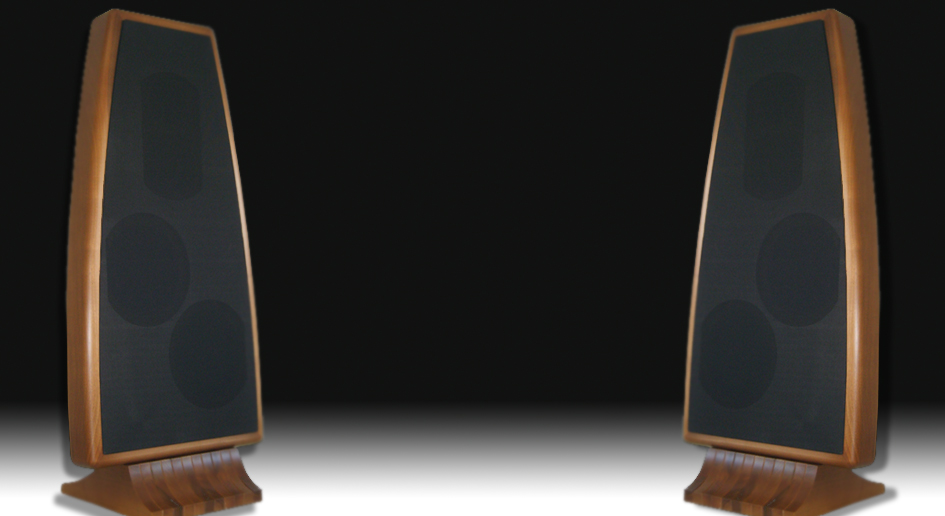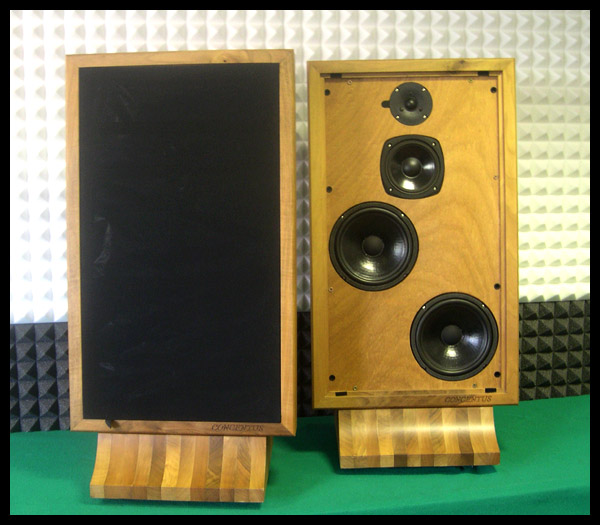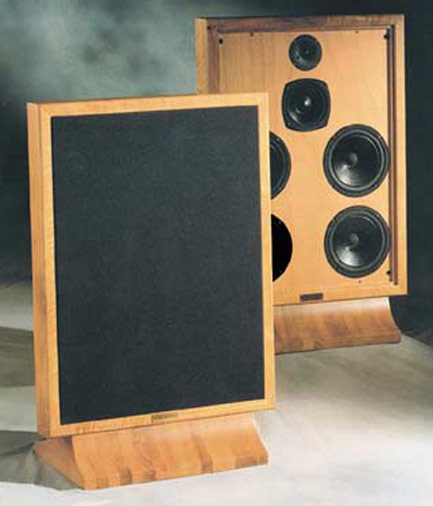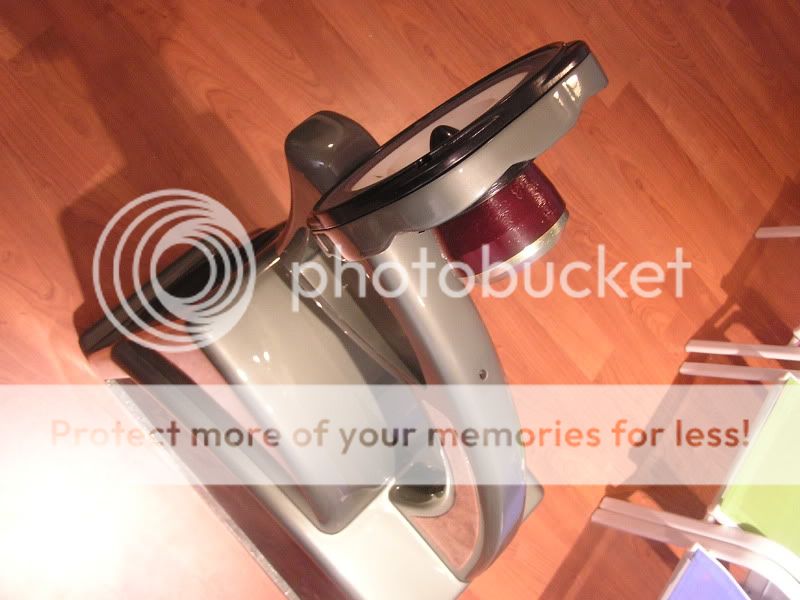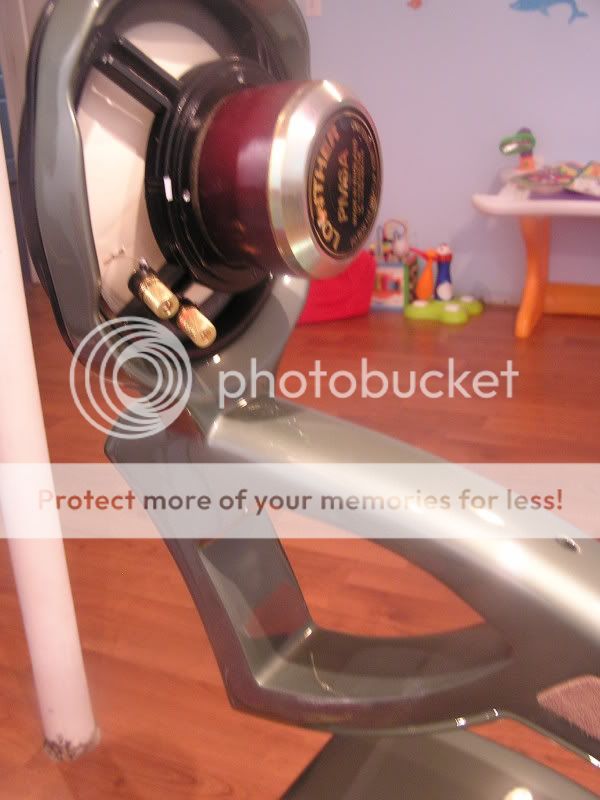but I am a bit uneasy about the narrow vertical dispersion of the Neo3. Would you please share your experience with regards to the vertical dispersion of the Neo3? TIA
Neo3 is one of the most natural sounding tweeters with flat response, uniform off-axis response and extremely low distortion.
I never noticed its "narrow vertical dispersion". I never measured its vertical dispersion. Did you? Do you have data to show? I certainly feel its dispersion is uniform in both planes...its planar and Neo3 is practically square, so there is no reason for too different vertical vs horizontal dispersion. Maybe longer ribbons, but neo3? Do you have data to show c2cthomas?
The vertical dispersion of the Neo3 *is* different than horizontal. If you look closely, you'll see that there are internal damping pads covering the ribbon on each side. These work as a "shield" for high frequencies, making the effective width smaller at high frequencies, but only in the lateral plane.
No - I dont have any measurements either...
No - I dont have any measurements either...
I was reading about the (narrow) vertical dispersion of the B&G Neo3 in another forum just a day or two ago and the author had done a drawing showing that the dispersion was only about 2ft. vertical at 12ft distance from the driver (it was in OB but used a baffle of moderate size). I thought that I had it book marked – but nooooo. So I checked the history file and can’t find a link there but I’ll keep trying. From all the favorable comments that I have read about the Neo3 I found his comments rather odd for if the vertical dispersion of this driver was so limited surely it would be mentioned frequently by users and designers.
Of course all speakers start to “beam” at frequencies above respective mechanical dimensions – which leads off into other long discussions better stated by pro’s such as yourself and StigErik rather than myself.
I too was thinking along the lines that due to its small size that the Neo3 would act more like a point source than line source and thus vertical dispersion would be OK – especially when used in conjunction with a FR like the Fostex (which will also “beam” above certain frequencies if we want to go there – and I don’t).
I did go to the B&G website – but they have changed it around and I can’t find any information on drivers there now, plus when I visited the PE website I discovered that BG had discontinued the Neo3 PDR and now sell the Neo3 PDRW. DISCONTINUED Bohlender Graebener Neo3pdr Planar Transducer | Parts-Express.com
Once upon a time BG stated that both the Neo3 and Neo8 were designed for use in line array speakers and that the narrow vertical dispersion was intended for this use and reduced the need for concern about floor and ceiling reflections and thus the reason for my question.
I currently use ESS AMT1’s but I’m looking for an alternative driver that is magnetically shielded due to the wife having a pacemaker and she needs to keep that device away from strong magnetic fields – thus I need to redo some speakers that don’t have shielded drivers.
You have answered my question with “I never noticed its ‘narrow vertical dispersion’" and I am grateful for your response.
Heck – for their reasonable price I’ll just pick up a pair and go for it.
Now if Fostex will hold still for awhile I might be able to get a pair of drivers before they decide to stop making them too!!!
Of course all speakers start to “beam” at frequencies above respective mechanical dimensions – which leads off into other long discussions better stated by pro’s such as yourself and StigErik rather than myself.
I too was thinking along the lines that due to its small size that the Neo3 would act more like a point source than line source and thus vertical dispersion would be OK – especially when used in conjunction with a FR like the Fostex (which will also “beam” above certain frequencies if we want to go there – and I don’t).
I did go to the B&G website – but they have changed it around and I can’t find any information on drivers there now, plus when I visited the PE website I discovered that BG had discontinued the Neo3 PDR and now sell the Neo3 PDRW. DISCONTINUED Bohlender Graebener Neo3pdr Planar Transducer | Parts-Express.com
Once upon a time BG stated that both the Neo3 and Neo8 were designed for use in line array speakers and that the narrow vertical dispersion was intended for this use and reduced the need for concern about floor and ceiling reflections and thus the reason for my question.
I currently use ESS AMT1’s but I’m looking for an alternative driver that is magnetically shielded due to the wife having a pacemaker and she needs to keep that device away from strong magnetic fields – thus I need to redo some speakers that don’t have shielded drivers.
You have answered my question with “I never noticed its ‘narrow vertical dispersion’" and I am grateful for your response.
Heck – for their reasonable price I’ll just pick up a pair and go for it.
Now if Fostex will hold still for awhile I might be able to get a pair of drivers before they decide to stop making them too!!!
I certainly do not hear any problems in vertical plane when listening.
If those damping pads have an effect, than it must be small, just like those pads are pretty small. Nothing like some ribbon sports big sponges on top and bottom. Those pads in Neo3 are barely visible.
I can attempt to do some measurements over the weekend (if the weather is ugly, I will have some time).
If those damping pads have an effect, than it must be small, just like those pads are pretty small. Nothing like some ribbon sports big sponges on top and bottom. Those pads in Neo3 are barely visible.
I can attempt to do some measurements over the weekend (if the weather is ugly, I will have some time).
I certainly do not hear any problems in vertical plane when listening.
If those damping pads have an effect, than it must be small, just like those pads are pretty small. Nothing like some ribbon sports big sponges on top and bottom. Those pads in Neo3 are barely visible.
I can attempt to do some measurements over the weekend (if the weather is ugly, I will have some time).
Thank you adason. The AMT1's I currently have do present some degree of vertical cut-off but it really isn't very bad at all. I love the heck out of 'em but it's time to play with some new stuff anyway.
I figure that if I keep the Neo3's at listening level things should be ok - esp. with a FR in the mix.
For what it's worth, the few people who have listened to my setup with Neo3 tweeters haven't complained about vertical dispersion problems. One of them was building his own OB speakers, so he specifically walked around the room, sat / stood, etc. to check for response anomalies.
Tanks Saurav - that's good to know!
Now I'll need to polish up my polka-dot painting skills and get ready to whip some of BudP's EnAbl magic on the FR. I'm planning on crossing the Neo3 above 7kHz with just a cap and run some type of woofer (still to be decided) off it's own amp.

Now I'll need to polish up my polka-dot painting skills and get ready to whip some of BudP's EnAbl magic on the FR. I'm planning on crossing the Neo3 above 7kHz with just a cap and run some type of woofer (still to be decided) off it's own amp.
For what it's worth, the few people who have listened to my setup with Neo3 tweeters haven't complained about vertical dispersion problems.
How delicate is it?
I blew my first rather expensive for the time ( Panasonic EAH400) ribbons many years ago. I must have been in my early teens but that has left a permanant impression in my head that all ribbons are delicate (even though the rational part of my brains argues otherwise) as was the London Decca (maybe the KEF/Volt woofers it was usually paired with were hardier and we pushed system quite hard in our young and crazy days).
Once upon a time BG stated that both the Neo3 and Neo8 were designed for use in line array speakers and that the narrow vertical dispersion was intended for this use and reduced the need for concern about floor and ceiling reflections and thus the reason for my question.
I seem to remember this part too. Then again I wonder if limited vertical dispersion is all that bad.
Some 15-17 years ago I was working with 3 good dome tweeters: Dyna D260, Morel MDT33, and Scan 9900 and found that the comparitively lesser dispersion of the 9900 probably caused by it waveguide helped imaging.
Also remember that all our friends over in the fullrange section would have been more affected by the audible effects of beaming in their large cone fullrange systems. I am not saying beaming does not exist, I just wonder what it's effect is on the enjoyment of music in stereo.
Last edited:
I don't really have a reference with which I could answer this question. I've sent some pretty loud tones through it by accident, much louder than my listening level, and I haven't heard / measured any issues. Having said that, multiple people on this forum have mentioned destroying theirs. So... who knows.How delicate is it?
Vertical dispersion of Neo 3 and Neo 10
I got into this questions in another thread and tried to research them.
In fact Zaph has published vertical dispersion measurements for both these units. The Neo 3 in his 'Battle of the Non-Domes' standard test which instead of horizontal dispersion presents vertical one, it is here: Zaph|Audio .
He also has tested the new Neo10 big mid planar on his Blog-page: Zaph|Audio .
+-15 degrees vertical give a listening window of about 1.4 meters vertical height at 2.5 meter listening distance from the loudspeaker.
/Erling
I got into this questions in another thread and tried to research them.
In fact Zaph has published vertical dispersion measurements for both these units. The Neo 3 in his 'Battle of the Non-Domes' standard test which instead of horizontal dispersion presents vertical one, it is here: Zaph|Audio .
He also has tested the new Neo10 big mid planar on his Blog-page: Zaph|Audio .
+-15 degrees vertical give a listening window of about 1.4 meters vertical height at 2.5 meter listening distance from the loudspeaker.
/Erling
Last edited:
An externally hosted image should be here but it was not working when we last tested it.
My P17 Clones
Hi Guy's
Just found this thread thank's to Gainphile (where have I been).
I copied Lukasz Frikus P17 design & am very happy with the sound, but got ripped off by a US ebay'er who said the 15" Altec 416B I bought from him where AOK. By the time I found out they (or one of them) was not AOK, it was too late to put in a negative feedback.
I am looking at replacing the Altecs, but dont want to risk a bad deal again. what would you recommend that's not way expensive & could easily be sourced to Australia. Or if anyone has a GOOD 15" Altec 416B 8Ohm let me know.
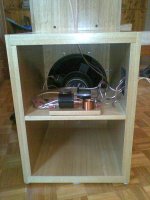
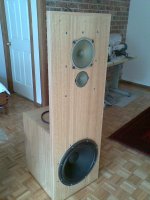
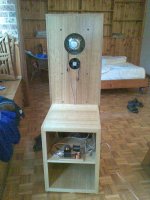
Hi Guy's
Just found this thread thank's to Gainphile (where have I been).
I copied Lukasz Frikus P17 design & am very happy with the sound, but got ripped off by a US ebay'er who said the 15" Altec 416B I bought from him where AOK. By the time I found out they (or one of them) was not AOK, it was too late to put in a negative feedback.
I am looking at replacing the Altecs, but dont want to risk a bad deal again. what would you recommend that's not way expensive & could easily be sourced to Australia. Or if anyone has a GOOD 15" Altec 416B 8Ohm let me know.



The Gate
Very ambitious design. I'm sure they handle the low frequency very well
The Gate, open baffle 4 tower loudspeaker system!
Frequency response: Tchaikovsky Overture 1812 proof
Measured music peaks of 101 dB at 3 meters during a demonstration.
Crossover: 2x Behringer DCX2496, all 6 outputs driven (alternatives need to cover 2x 6 channels of output)
Crossover frequencies: 70, 106/243, 3000 Hz (depends on crossover and SPL preferences)
Amplification required: subwoofer towers capable of driving down to at least 2 ohms (2 channels per side), main towers down to 4 ohms, total of 6 channels per side. Pro-audio power amplifiers are known to give great results for the money, at high-end level think Krell, Mark Levinson, Bryston.
Oh yeah, it'll dryblow your hair when standing really close and playing bass heavy music (as witnessed and tested by people attending the DIY demonstration in Breda, the Netherlands).
The speakers in raw form in a normal sized livingroom (~3,60x6,20m, lined up against the long wall), driven by a total of 16000 watts of amplification;
Very ambitious design. I'm sure they handle the low frequency very well
The Gate, open baffle 4 tower loudspeaker system!
An externally hosted image should be here but it was not working when we last tested it.
Frequency response: Tchaikovsky Overture 1812 proof
Measured music peaks of 101 dB at 3 meters during a demonstration.
Crossover: 2x Behringer DCX2496, all 6 outputs driven (alternatives need to cover 2x 6 channels of output)
Crossover frequencies: 70, 106/243, 3000 Hz (depends on crossover and SPL preferences)
Amplification required: subwoofer towers capable of driving down to at least 2 ohms (2 channels per side), main towers down to 4 ohms, total of 6 channels per side. Pro-audio power amplifiers are known to give great results for the money, at high-end level think Krell, Mark Levinson, Bryston.
Oh yeah, it'll dryblow your hair when standing really close and playing bass heavy music (as witnessed and tested by people attending the DIY demonstration in Breda, the Netherlands).
An externally hosted image should be here but it was not working when we last tested it.
The speakers in raw form in a normal sized livingroom (~3,60x6,20m, lined up against the long wall), driven by a total of 16000 watts of amplification;
Very ambitious design. I'm sure they handle the low frequency very well
Oh, they do, they do.
I wanted ultimate loudspeakers without them getting too big (of course it depends on the definition of "too").
The best choice concidering ceilng height, baffle width and hooking them up to an amp is 12 30 cm (12") woofers which came down to a maximum displacement of about 16.5 litres.
Of course they succeed in all other aspects as well.
- Home
- Loudspeakers
- Multi-Way
- Ultimate Open Baffle Gallery
